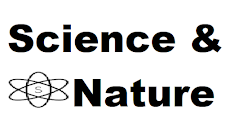Ever since human beings have imagined space travel, the notion of traveling faster than light has been at the center of our imagination. From science fiction tales to serious physics debates, the notion of overcoming the universe's ultimate speed limit of 299,792,458 meters per second has been the subject of fascination. But, as Einstein's theory of relativity predicts, going faster than light (FTL) isn't merely impossible with our current physics—it also causes bizarre and paradoxical phenomena, especially with time.
Einstein's Theory and the Cosmic Speed Limit
Albert Einstein's special theory of relativity in 1905 imposed rigorous conditions on how space and time act at close to light speed. One of its most well-known equations, E = mc², demonstrates that as a body nears the speed of light, its energy (and by extension mass) grows exponentially. This implies you'd need an infinite amount of energy to get a body to light speed—a requirement impossible to meet.
But suppose, just suppose, that somehow or other, against the laws of physics as we currently understand them, we might travel faster than light. Things begin to get strange here.
The Breakdown of Cause and Effect
One of the most basic principles of reality is causality—something having to precede its effect. Push a cup off a table and it falls, shattering on the floor. The push created the fall. But when you add FTL travel, such a simple law of cause and effect can get disrupted.
Relativity informs us that time is relative, not absolute; it varies according to the speed at which you are traveling. If a body travels almost at the speed of light, time would slow down compared to a stationary observer. However, if a body travels at speeds greater than light, relativity calculations indicate that an observer in another frame could witness the effect prior to the cause!
For instance, if a spaceship were able to travel FTL, a message from it would, in certain frames of reference, arrive before it was sent. This produces logical paradoxes, including:
The Grandfather Paradox: If you were able to travel
FTL, you could theoretically send a message to your past self that keeps you
from ever deciding to take the trip in the first place.
Violations of Free Will: If information could be sent
back in time, individuals would be able to receive messages from the future and
alter their behavior in response, resulting in paradoxes.
Tachyons and Hypothetical FTL Particles
A few theoretical particles, known as tachyons, have been hypothesized in physics. Tachyons would always travel faster than light, so in theory, they could move back in time. There is no experimental evidence to suggest that these particles exist, and most physicists assume that if they did, they would cause unresolvable paradoxes.
The Alcubierre Drive: A Loophole?
One of the few genuinely scientific concepts for FTL travel is the Alcubierre drive, a theoretical concept relying on solutions to Einstein's field equations. This concept proposes that a spaceship might travel on a "bubble" of warped spacetime, compressing space ahead of it and expanding it behind, enabling faster-than-light travel without actually violating relativity. This idea, however, needs exotic matter with negative energy, something never seen in nature.
Conclusion: Time Travel and Reality
Although FTL travel is yet to be a reality for science fiction, the current state of physics indicates that it would be tantamount to causing problems with causality and time paradoxes. The universe appears to have laws in place, which prevent such infringements, vouchsafing Einstein's initial realization that the speed of light is the unbreakable speed limit.
Unless we find new physics that can explain these
paradoxes, it appears that faster-than-light travel will stay in the domain of
science fiction.





0 Comments